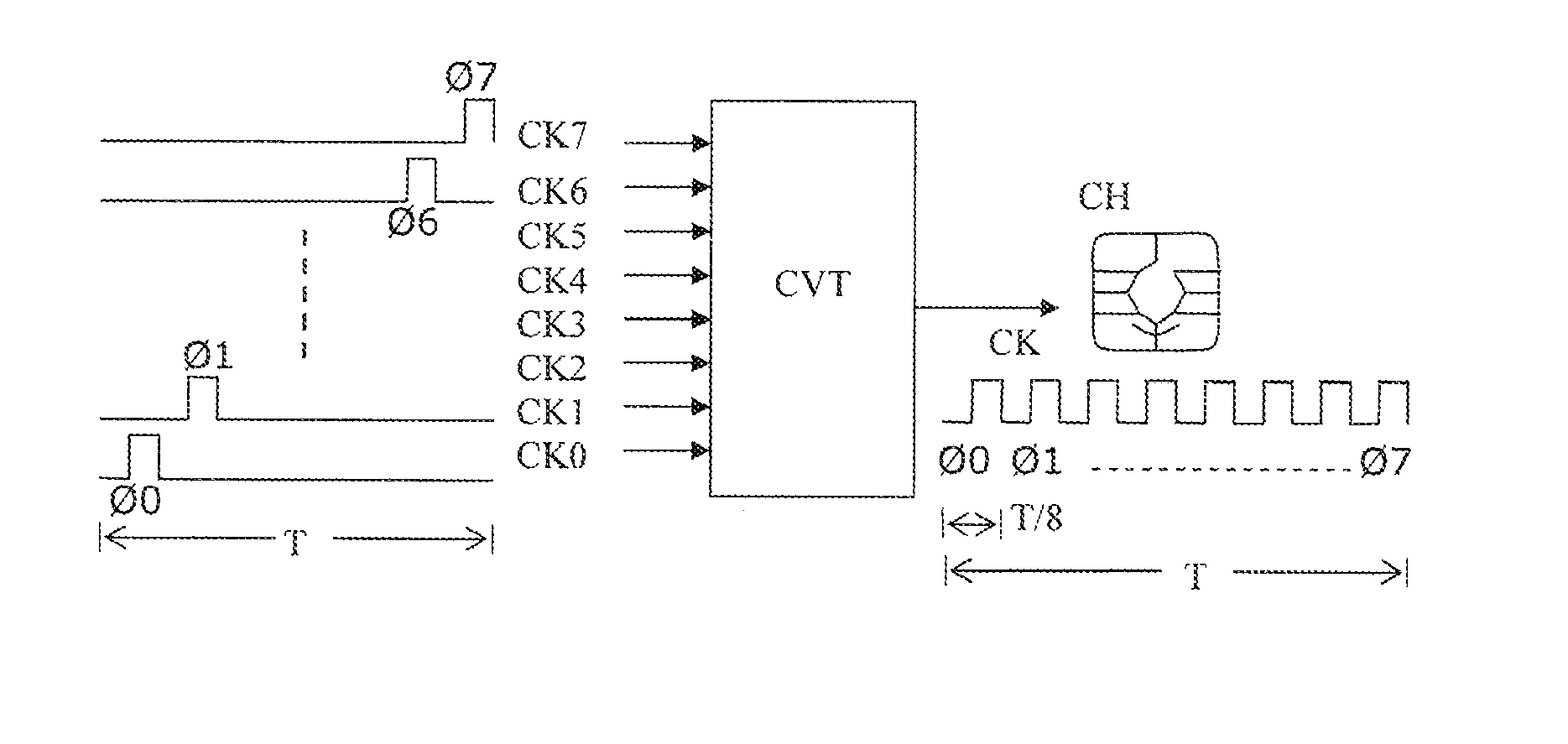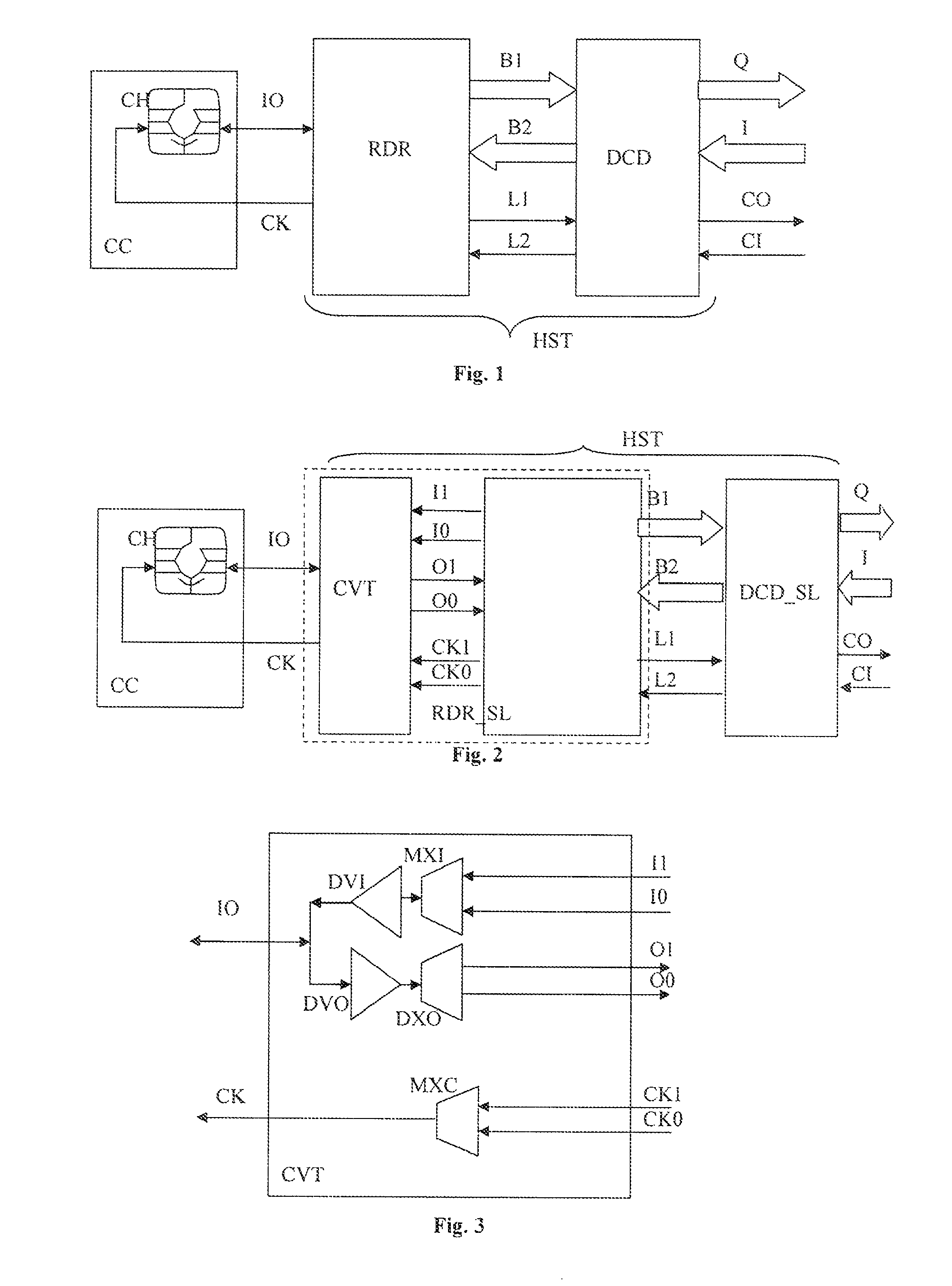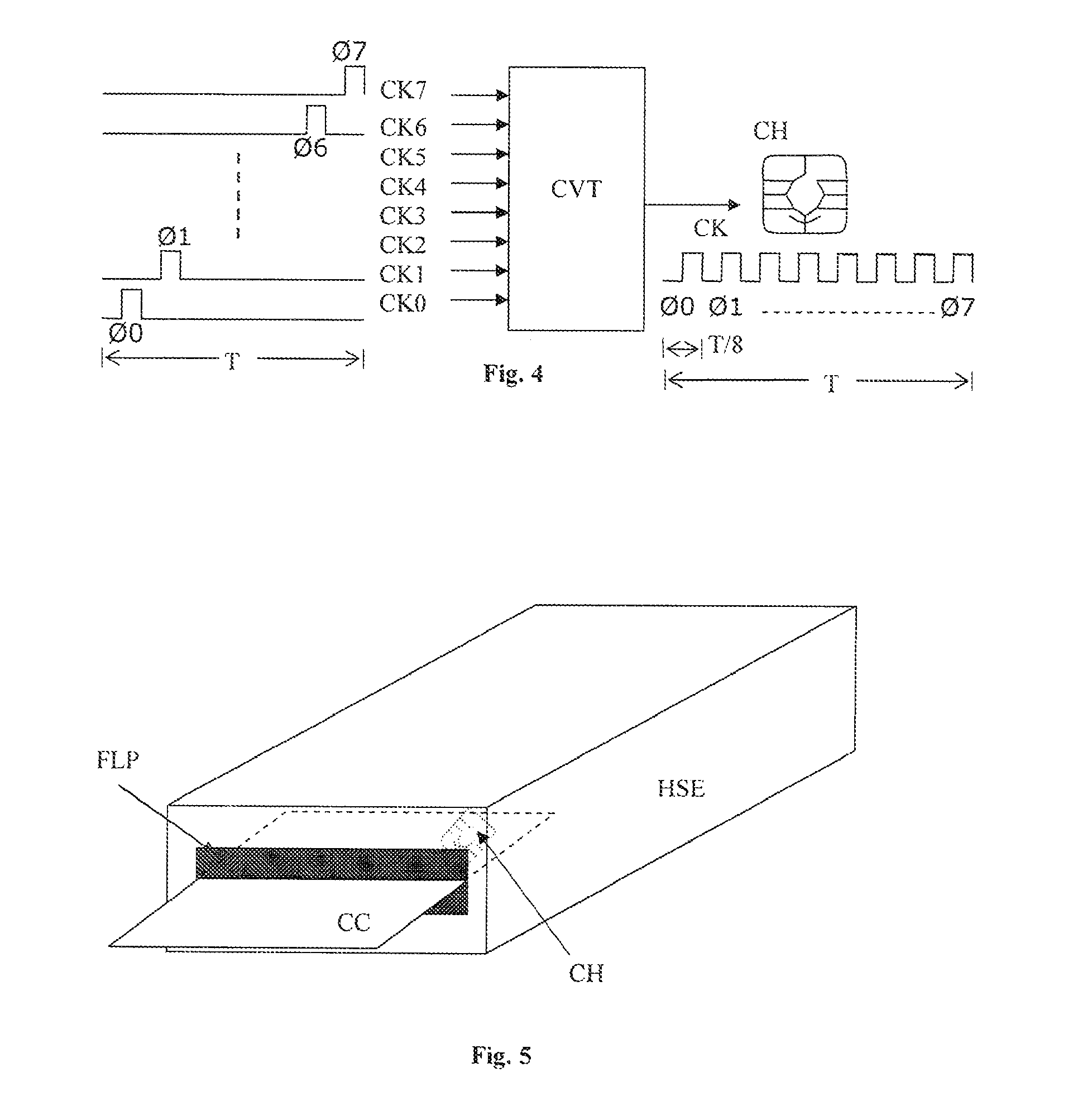Method and apparatus for communicating between a security module and a host device
a security module and host device technology, applied in the field of methods and apparatus for communicating between a security module and a host device, can solve the problems of unscrupulous third parties attempting to compromise the security of the system, and unscrupulous third parties may attempt to secure features such as encryption keys, so as to reduce the amount of electromagnetic interference, and reduce the effect of electromagnetic interferen
- Summary
- Abstract
- Description
- Claims
- Application Information
AI Technical Summary
Benefits of technology
Problems solved by technology
Method used
Image
Examples
Embodiment Construction
[0032]It is well known to those who are familiar with the domain of radio frequency (RF) electromagnetic interference (EMI) that a contributory variable in determining the amount of EMI that will be emitted from a wire is proportional to the length of that wire and that another contributory variable is the frequency content of a signal transported by the wire. In a preferred embodiment of the present invention it is therefore sought to minimise the length of any wires which carry such signals with high frequency content in the host device / security module ensemble and to minimise the number of such wires.
[0033]FIG. 1 shows a security module connected to a host device. The security module is in the form of an electronic chip (CH) housed on a chip card (CC). This configuration is generally known in the state of the art. The security module or chip (CH) on its chip card (CC) is inserted into a slot in the host device (HST) and the chip's contact pads enter into contact with a set of con...
PUM
 Login to View More
Login to View More Abstract
Description
Claims
Application Information
 Login to View More
Login to View More - R&D
- Intellectual Property
- Life Sciences
- Materials
- Tech Scout
- Unparalleled Data Quality
- Higher Quality Content
- 60% Fewer Hallucinations
Browse by: Latest US Patents, China's latest patents, Technical Efficacy Thesaurus, Application Domain, Technology Topic, Popular Technical Reports.
© 2025 PatSnap. All rights reserved.Legal|Privacy policy|Modern Slavery Act Transparency Statement|Sitemap|About US| Contact US: help@patsnap.com



